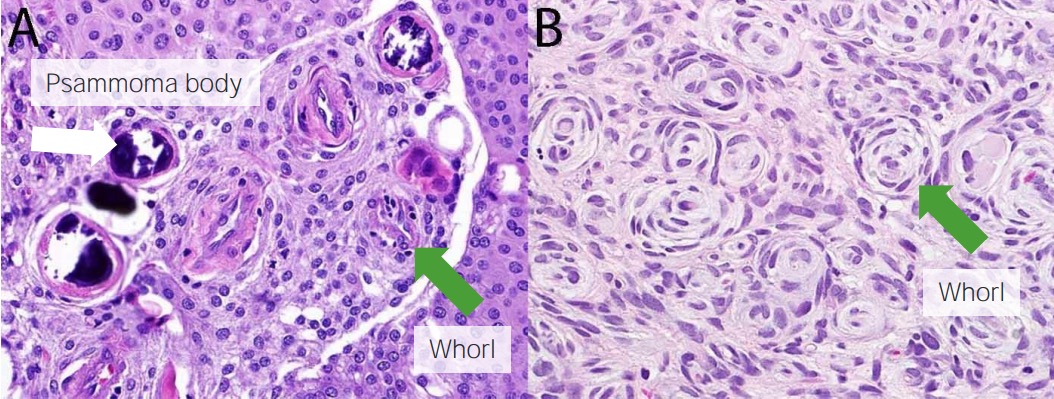Playlist
Show Playlist
Hide Playlist
Meningioma: Treatment
-
Strowd CNS Tumors Meningioma.pdf
-
Download Lecture Overview
00:01 So how do we treat meningiomas? Well, there's a sequence, not all meningiomas are treated equally, some can just be observed. 00:10 And in fact the vast majority of meningiomas, we follow and observe, and patients don't require any treatment. 00:16 When treatment is required, we think about surgery, or radiation therapy, and sometimes those are combined. 00:24 Typically patients do very well with initial treatment. 00:27 But if the tumor does recur, we again think of combining or selecting surgery and or radiation therapy, depending on the features of the patient's case. 00:37 So I'd like for you to know each of these treatment options and how we select those for patients. 00:44 So how do we think about observation? Well observation is the treatment of choice for the vast majority of asymptomatic meningiomas. 00:51 Recall that the majority of meningiomas or mini meningioma present incidentally. 00:56 A patient is in a car accident undergoes a CT or an MRI scan, and we find a meningioma that we shouldn't have found. 01:03 That's a patient who we will observe with imaging and they may not ever need a treatment. 01:08 The decision to observe or treat with something like surgery should be made on an individual basis. 01:14 And the things that we think about that factor into that decision, include the clinical presentation, how fast did symptoms develop? The imaging characteristics, do we see brain invasion, like we did for that temporal meningioma, where there's irritation of the surrounding brain that suggests higher grade? What's the tumor growth pattern? Is this growing on imaging? Or is it stable? And other medical history and comorbidities that can increase the risk for individual patients. 01:43 And symptomatic patients or patients with rapidly enlarging tumors who don't have a tissue diagnosis, surgery is the mainstay of treatment. 01:51 And we're really looking to establish a tissue diagnosis and help the patients with symptomatic relief. 01:58 What about surgery? When we think about surgery, we want to do surgery where we can take out the whole meningioma. 02:04 We're looking for gross total resection. 02:07 Taking out all of the tumor. 02:09 Extensive resection after meningioma surgery is really important. 02:14 And we've established, our field has established a grading scale, the Simpson grading scale to guide us in how extensive the surgery was. 02:22 This is the Simpson grading scale, which is something to know of, but not all the details. 02:27 It's a five point scale and scales I -III, or ratings I -III, or near total resection. 02:33 That's a really good resection of this meningioma. 02:36 In grades IV-V are only partial resection of the tumor, and there is higher risk of recurrence. 02:42 For WHO grade I meningiomas, tumors can be monitored with serial imaging, but if we're going to do surgery, we're really seeking gross total resection of that lesion. 02:52 So let's look more specifically at the Simpson Grading Scale and see how different types of surgery portend a different recurrence risk rate, which you can see on the right side of this table. 03:03 A Simpson Grade I surgery is a great surgery. 03:06 That's all the tumor is removed, including the dural tail, and anything that could have looked like tumor even macroscopic or microscopic at the time of surgery, and there is a very low risk of recurrence of that meningioma. 03:19 Simpson Grade II surgeries include complete removal of the tumor, but there may only be coagulation of that extension of the tumor, the dural tail that extends along the meningeal surface and there is a slightly higher recurrence rate. 03:33 Simpson Grade III tumors are completely removed, but the surgeon cannot, is not able to safely remove the dural tail, and again a slightly higher recurrence rate for those tumors. 03:44 And then Grade IV and Grade V, we see that there is only partial or incomplete removal of the tumor, often due to its location and safety of the patient with higher risks of recurrence. 03:57 The other treatment option we discussed is radiation therapy. 04:00 In addition to observation and surgery, radiation is that third tool in our toolbox to manage some of these tumors. 04:07 And there's two things we consider when evaluating a patient for radiation therapy. 04:11 The first is what is the tumor grade? And the second is how extensive is the surgery? For grade I tumors, where there's gross total resection, the risk of recurrence is extremely low and we typically observed those tumors without radiation therapy. 04:26 Grade I tumors were subtotal resection is able to be achieved at the time of surgery can be observed or radiated. 04:33 And this is up to the decision of the patient, the radiation oncologist, and the surgeon. 04:39 If surgery is not possible for a grade I meningioma, what is presumed to be a grade I meningioma by imaging, radiation therapy is the treatment of choice. 04:48 How about grade II meningiomas? Those slightly more aggressive tumors, which are higher risk of recurrence, when gross total resection is achieved. 04:56 Sometimes we will observe those tumors but often radiation therapy will be offered. 05:02 And if subtotal resection is the only surgery that's possible radiation therapy is the postoperative treatment of choice. 05:09 For all grade III tumors, the treatment of choices of any aggressive surgery are as much maximal surgeries as possible, followed by radiation therapy, given the high risk of recurrence of these tumors.
About the Lecture
The lecture Meningioma: Treatment by Roy Strowd, MD is from the course CNS Tumors.
Included Quiz Questions
What is the treatment of choice for asymptomatic meningiomas?
- Observation
- Surgical resection
- Radiation therapy
- Chemotherapy
- Stereotactic radiosurgery
Which of the following is the extent of resection for Simpson grade V resection?
- Simple decompression, no resection of dural tail
- Partial tumor removal, no resection of dural tail
- Macroscopically complete removal of tumor, no resection of dural tail
- Macroscopically complete removal of tumor, coagulation of dural tail
- Macroscopically complete removal of tumor, involved bones, venous sinuses, and dural tail
Which of the following is the extent of resection for Simpson grade I resection?
- Macroscopically complete removal of tumor, involved bones, venous sinuses, and dural tail
- Simple decompression, no resection of dural tail
- Partial tumor removal, no resection of dural tail
- Macroscopically complete removal of tumor, no resection of dural tail
- Macroscopically complete removal of tumor, coagulation of dural tail
Customer reviews
5,0 of 5 stars
| 5 Stars |
|
5 |
| 4 Stars |
|
0 |
| 3 Stars |
|
0 |
| 2 Stars |
|
0 |
| 1 Star |
|
0 |




